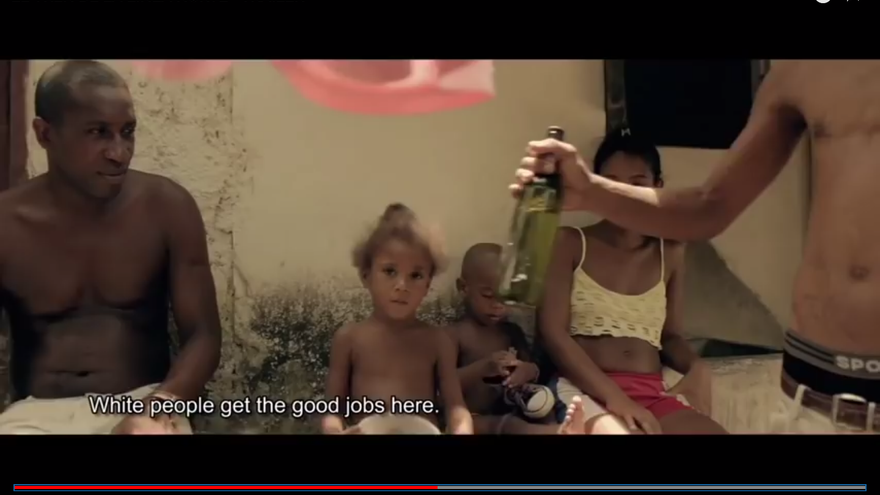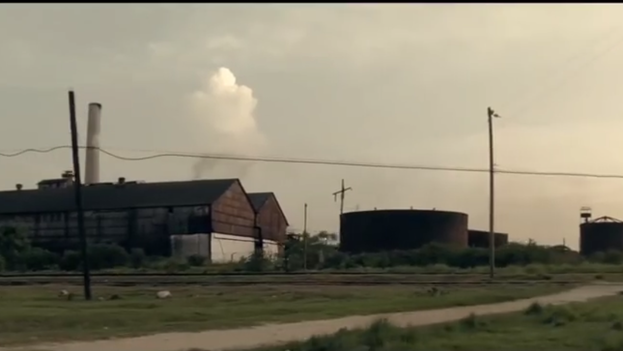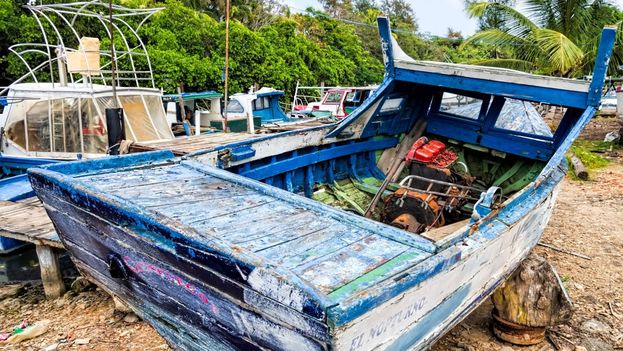
![]() 14ymedio, Luz Escobar, 26 April 2018 — At 25, Yimmi Buchillón García has tried almost everything to make a living: he was a fisherman, carpenter and repairer of carnival floats, but in Punta Alegre, Ciego de Ávila, “it is very difficult to find a job,” he tells 14ymedio in despair. On March 25 he sailed for the United States but failed to reach his destination and was repatriated to the village from where “almost all the young people want to leave.”
14ymedio, Luz Escobar, 26 April 2018 — At 25, Yimmi Buchillón García has tried almost everything to make a living: he was a fisherman, carpenter and repairer of carnival floats, but in Punta Alegre, Ciego de Ávila, “it is very difficult to find a job,” he tells 14ymedio in despair. On March 25 he sailed for the United States but failed to reach his destination and was repatriated to the village from where “almost all the young people want to leave.”
Buchillón departed from the north coast of the center of the island, one of the areas most affected by Hurricane Irma last September. Many residents dream of emigrating to escape the crisis, but the end of US wet foot/dry foot policy means most of their attempts end in deportation back to Cuba.
In Punta Alegre, in the Chambas municipality, winds and coastal floods toppled 645 homes while another 1,054 partially collapsed. Although the government turned to repairing the area’s infrastructure and credits were granted to rebuild the houses, the economic life of the town has not recovered.
“The situation has gotten worse, I would like to stay with my family, with my wife and have a steady job here, but nothing comes up,” explains Buchillon just a few hours after arriving home after spending a month away from the island, a part of that time at sea and the rest in a prison in the Bahamas, from where he was repatriated.
According to data from the National Bureau of Statistics for 2016, 17.3% of young people in the country of working age do not study or work, although more than a third of these unemployed (37%) say they are not looking for work either, figure that totals 78,778 young people throughout the country.

The numbers could be higher since many do not report their situation, in the absence of unemployment insurance that would allow them to collect a minimum amount while looking for a job. In rural areas the problem is more serious and a good part of the young people only find informal and illegal tasks to support themselves.
“Before the hurricane I had messenger work in a cafe, but it was illegal, without a contract,” says Yoandy Rojas, another young resident of Punta Alegre who has tried to leave the country illegally three times. “Since September, this town has been taken over by the police so even a fly can’t move outside the law,” he explains.
The area, with little agriculture, depends mainly on the sea and the visits of tourists who go to the keys, north of Ciego de Ávila. “There are towns where people live mostly off the tourism business, but foreigners don’t come here much and also in recent months tourism has dropped,” he says.
“Here tourism is the center of everything,” explains Dielsy Hechevarría, who works as an informal guide and rents out two rooms with her mother. “If there are no foreigners there is no work,” says the young woman who is now hoping to move to Havana in search of other opportunities. “This town has no future,” he concludes.

In Punta Alegre, Buchillón made a living as a fisherman and illegally sold his products to residents and businesses in the area. The National Revolutionary Police (PNR) killed that opportunity with an increase in operations on the coast. “They harass fishermen and do not let them live,” says his mother, María de Los Ángeles García León.
Last summer, Buchillón was hired to repair the floats of the popular festivities. “They paid me 150 Cuban pesos, about 7 Convertible pesos, for all the work and it was only enough to buy shoes for my daughter who started school,” he recalls. Since then, he has not returned to work with the State or in any private business.
García León has said goodbye to her son four times, at every attempt to leave the country. The last time was barely a month ago, when he left with 12 other friends to try to reach the coast of the United States. “There is a lot of misery here, and the young people have no life because they have a rope around their necks,” the woman says.
The rafters built a craft with a sail but without a motor, known popularly as a chapín, and launched themselves on the water. “We spent five days in the sea and there were a lot of waves,” recalled Buchillon, still suffering from a throat infection and the tousled hair of the shipwrecked.
On March 30, the US Coast Guard intercepted the raft and moved its occupants to a migrant detention center in the coastal town of Flipper in the Bahamas. After being prosecuted, the 13 rafters were taken to Nassau where they were imprisoned for 22 days until their return to Cuba.
Buchillón says that 34 Cubans from different groups came together and received degrading treatment, a situation that led them to start a hunger strike. A few hours after the fasting began, the ambassador of Cuba in the Bahamas, Ismara Mercedes Vargas Walter, visited to urge them to end the protest.
This Monday, finally, they set foot on Cuban soil and two days later Buchillón was back in Punta Alegre. “For now, I’m not thinking about trying to leave again,” he reflects, but he knows that he has a difficult task ahead of him, as difficult as evading the coastguard or surviving the waves: finding a job.
_____________________
The 14ymedio team is committed to serious journalism that reflects the reality of deep Cuba. Thank you for joining us on this long road. We invite you to continue supporting us, but this time by becoming a member of 14ymedio. Together we can continue to transform journalism in Cuba.
